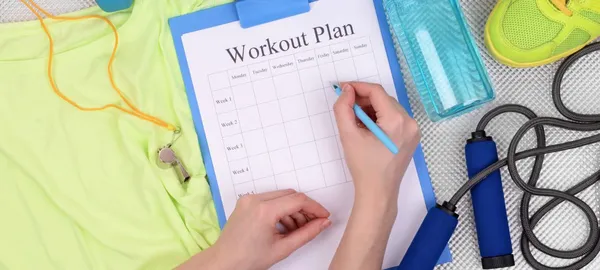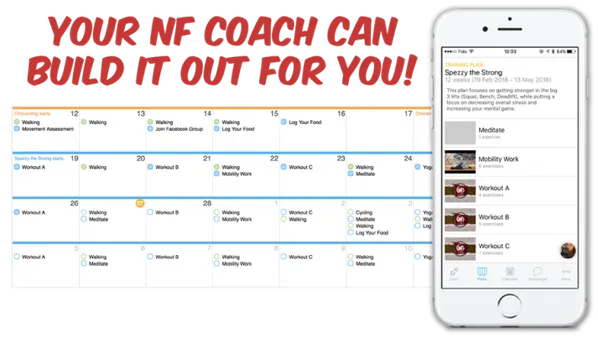Table of Contents
Calisthenics is a form of exercise that uses bodyweight as resistance. It's a great way to get fit and build strength, flexibility, and endurance. With a little planning, you can design your own calisthenics routine and program that fits your fitness level and goals. Here's how to get started.
How to Design Your Own Calisthenics Routine and Program: A Comprehensive Guide
I. Calisthenics Routine and Program Design: A Comprehensive Guide
Calisthenics Routine and Program Design: A Comprehensive Guide
Getting Started: Initial Steps
- Start Gradually: Begin with fundamental exercises. - Master the Basics
- Pay Attention to Warm-Up and Cool-Down.
- Proper Form Avoids Injuries. - Gymnastics Injuries - Prevention
Customize Your Calisthenics Routine and Set Goals
- Understanding Fitness Objectives.
- Focus on Strength, Endurance, or Both.
- Consider Skill-Based Goals. - Benefits of Gymnastics for Children
Beginner (1-3 Months) | Intermediate (3-6 Months) | Advanced (6+ Months) |
|---|---|---|
Focus on Bodyweight Exercises: Pull-Ups, Push-Ups, Squats, Lunges, Rows. | Introduce Progressions and Variations: Weighted Pull-Ups, Dips, Handstand Push-Ups. | Add Advanced Skills: Muscle-Ups, Planche, Back Lever, Human Flag. |
Start with 3 Sets of 8-12 Repetitions, 3 Times a Week. | Increase Sets and Reps, Maintain Frequency. | Decrease Reps, Increase Frequency, Add Skill Work. |
Sample Calisthenics Routine for Beginners
- Warm-Up: Jumping Jacks, Arm Circles, Leg Swings.
- Bodyweight Squat: 3 sets of 8-12 reps.
- Push-Up (on knees if needed): 3 sets of 8-12 reps.
- Inverted Row: 3 sets of 8-12 reps.
- Tricep Dips (chair or bench): 3 sets of 8-12 reps.
- Lower Body: Lunges or Squats, 3 sets of 10-15 reps per leg.
- Core Work: Plank, Side Plank, Crunches, 3 sets of 10-15 reps.
- Cool-Down: Stretches for Major Muscle Groups.
Nutritional Considerations
- Balanced Diet for Energy. - Gymnastics Books and Podcasts
- Hydration is Key.
- Protein for Muscle Recovery.
- Healthy Fats and Complex Carbs.
Frequency, Duration, and Progression
- Beginners: 3 Times Weekly, 30-45 Min Per Session.
- Intermediate: 4-5 Times Weekly, 45-60 Min Per Session.
- Advanced: 5-6 Times Weekly, 60+ Min Per Session.
- Progress by Increasing Sets, Reps, or Difficulty.
II. Essential Considerations for Calisthenics Routine Design
Tailor Your Routine to Your Fitness Level and Goals
- Consider your current fitness level to select appropriate exercises and progressions.
- Define specific goals, whether it's strength, endurance, or skill development.
- Start slowly and gradually increase the intensity and complexity of your routine as you progress.
Learn more about creating a tailored calisthenics routine.
Choose Exercises that Target Multiple Muscle Groups
- Prioritize compound exercises to engage multiple muscle groups simultaneously.
- Balance your routine with pushing, pulling, and core exercises for comprehensive development.
- Include variations to target different muscles and movement patterns.
Discover a wide range of calisthenics exercises for a balanced routine.
Ensure Proper Form and Technique
- Maintain good posture and body alignment throughout each exercise.
- Focus on controlled movements and avoid using momentum or sacrificing form for repetitions.
- Master the basics before advancing to more complex skills.
Avoid common mistakes and perfect your calisthenics technique.
Include Rest Days and Active Recovery
- Schedule rest days to allow your body to recover and adapt.
- Engage in active recovery activities like light cardio, stretching, or yoga to enhance recovery and prevent injuries.
- Listen to your body; don't push yourself too hard if you're feeling fatigued or sore.
Optimize your recovery strategy for better results in calisthenics.
Progress Gradually and Avoid Overtraining
- Gradually increase the difficulty of your workouts by adding repetitions, sets, or variations.
- Monitor your progress and adjust your routine accordingly.
- Avoid overtraining, which can lead to injuries, burnout, and decreased performance.
Learn the art of gradual progression in calisthenics for sustainable results.
Set Realistic Goals and Celebrate Achievements
- Set realistic, achievable goals to maintain motivation and avoid discouragement.
- Celebrate your achievements, no matter how small, to stay motivated and keep pushing forward.
- Stay committed to your routine and enjoy the journey of calisthenics.
Get inspired by the achievements of calisthenics athletes and strive for your own goals.
III. Structuring Your Calisthenics Program
Structuring Your Calisthenics Program
Creating a well-structured calisthenics program is crucial for achieving your fitness goals. Here are some key steps to follow:
- Set Clear Goals: Clearly define your fitness objectives, whether it's building strength, improving endurance, or mastering specific skills. Tailor your program to align with these goals.
- Choose the Right Exercises: Research and select calisthenics exercises that target the muscle groups and skills you want to develop. Create a diverse routine that includes exercises for various body parts and movement patterns.
Muscle Group | Exercise | Beginner Variation | Advanced Variation |
Chest | Push-ups | Incline push-ups | Decline push-ups |
Back | Pull-ups | Assisted pull-ups | One-arm pull-ups |
Legs | Squats | Bodyweight squats | Pistol squats |
Core | Planks | Basic plank | Side plank variations |
Shoulders | Handstand push-ups | Against a wall | Free-standing |
Frequency and Duration: Determine how often and how long you should train each week. Consider your fitness level, goals, and recovery needs when setting your workout schedule. Aim for a balance that allows for progression and prevents overtraining.
Progressive Overload: To see continuous improvement, gradually increase the difficulty of your workouts over time. This can involve increasing the number of repetitions, sets, or adding more challenging variations of exercises.
- Warm-up and Cool-down: Always start your workout with a dynamic warm-up to prepare your muscles for exercise. Similarly, finish with a cool-down and stretching routine to promote recovery and reduce muscle soreness.
- Rest and Active Recovery: Ensure adequate rest and recovery between workouts to allow your muscles to repair and rebuild. Incorporate active recovery days with light activities like yoga or swimming to aid in recovery.
IV. Progression and Variation in Calisthenics Training
Progression and Variation in Calisthenics Training
In your calisthenics journey, progression and variation are fundamental to continuous improvement and avoiding plateaus. This dynamic duo helps you expand your physical abilities, master new skills, and heighten the effectiveness of your workouts. Whether you're a seasoned athlete or a beginner eager to elevate your calisthenics game, this guide will equip you with strategies to keep your training fresh, challenging, and rewarding.
Embrace Variation:Variety is the spice of life, and this certainly applies to your calisthenics regime. By introducing variation into your workouts, you stimulate different muscle groups and movement patterns, promoting balanced development, enhanced functional fitness, and reduced risk of injuries. For instance, incorporate pulling (e.g., pull-ups) and pushing (e.g., push-ups) exercises, and vary your leg work with squats, lunges, and plyometric jumps. Discover a myriad of calisthenics exercises and variations to keep your workouts vibrant and captivating.
Gradually Increase Difficulty:As you progress in your calisthenics journey, gradually amp up the challenge to continuously stimulate muscle growth and strength gains. Resist the urge to jump too quickly to advanced skills; instead, methodically progress through foundational exercises, mastering each level before moving on. Begin with bodyweight squats, progress to pistol squats, then venture into weighted squats. This systematic approach ensures proper form and technique, preventing injuries and maximizing results.
Challenge Yourself with Advanced Calisthenics Skills:Once you've laid a solid foundation, it's time to elevate your calisthenics game by incorporating advanced skills. These feats of strength and agility, such as the planche, muscle-up, and human flag, demand a high level of coordination, core strength, and body control. Embark on this exciting chapter of your calisthenics journey with patience, dedication, and a willingness to push your limits. Learn the basic calisthenics skills and progressions that will lead you to these advanced milestones.
Level | Examples |
|---|---|
Beginner | Push-ups, squats, lunges |
Intermediate | Pull-ups, dips, handstand holds |
Advanced | Planche, muscle-up, human flag |
Periodize Your Training:Periodization is a crucial component of any well-structured training program, and calisthenics is no exception. By strategically alternating periods of intense training with periods of rest and recovery, you optimize muscle recovery, prevent burnout, and facilitate consistent progress. Plan your training cycle with a mix of demanding weeks, deload weeks (reduced intensity), and rest weeks (active recovery), allowing your body to adapt and rebuild. Explore the top calisthenics competitions and events where athletes showcase their incredible skills and dedication to the sport.
Listen to Your Body:Your body is your ultimate guide in calisthenics training. Pay close attention to its signals and adjust your routine accordingly. If you feel persistent pain or discomfort, it's crucial to take a step back, rest, and reevaluate your training plan. Remember, progress is not linear, and there will be times when you need to adjust your goals or take a break to prevent injuries and maintain your motivation. Embrace the journey, celebrate your achievements, and always prioritize your well-being.
"Consistency is the key to success in calisthenics. Show up every day, put in the work, and never give up on your goals."
- Unknown
V. Conclusion
As you embark on your calisthenics journey, remember that consistency, dedication, and a positive mindset are key to achieving your fitness goals. Embrace the challenges, celebrate your progress, and never stop pushing your limits. With unwavering commitment and the knowledge gained from this comprehensive guide, you'll transform your body, elevate your fitness, and unlock the full potential of calisthenics. Welcome to the world of bodyweight mastery, where you are the ultimate sculptor of your physique. Seize this opportunity to redefine your fitness journey and witness the incredible transformation that awaits you.